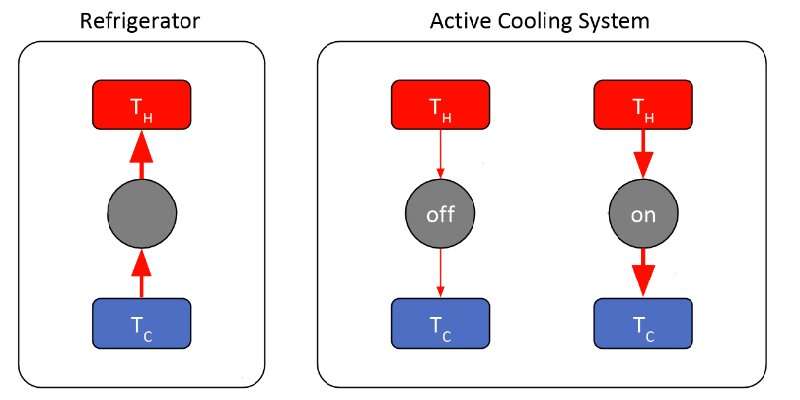May 8, 2019 report
Using metals with high thermoelectric power factor to create efficient all-solid-state active cooler

A team of researchers from the Ohio State University and the University of Virginia has found a way to use metals with a high thermoelectric power factor to create efficient all-solid-state active coolers. In their paper published in the journal Physical Review Applied, the group describes their new approach to cooling electronic devices and how well it worked.
Active cooling systems, by definition, are cooling systems that use electricity to cool a hot or warm device down to ambient temperatures. In this new effort, the researchers have found that such systems could benefit from the use of special metals. They also coined a new term to use as a metric—effective thermal conductivity. In active cooling systems, heat-carrying charge carriers flow from the hot side of an object to the cooler side when electricity is applied—effective thermal conductivity is a number that is calculated by adding a system's active thermal conductivity (when electricity is applied) to its passive conductivity (when the electricity is off).
As the researchers note, most commercial cooling systems have been optimized over the years for use in refrigeration applications, and are thus not ideal for active cooling situations such as removing heat from a computer. They note also that engineers typically use a measure called the thermoelectric figure of merit (zT) to describe the efficiency of such systems. But again, they suggest it is not a good metric for active cooling systems.
To improve the efficiency of such systems, the researchers looked for materials that had better-than-conventional thermal conductivity. They found two that showed promise: Kondo-effect metals and magnon-drag metals. They built a Peltier cooler using the metals (cobalt and cerium-palladium) and set it between various hot and cold materials, and then tested it to see how efficient it was at removing the heat on the hot side and sending it to the cold side.
The researchers report that when they applied five amps to the device, it pulled out approximately 100 more milliwatts of heat than it did when no power was applied. In terms of thermal conductivity, the device was measured at 40 W/mK in passive mode and reached 1000 W/mK with some heat differentials.
More information: M.J. Adams, et al. Active Peltier Coolers Based on Correlated and Magnon-Drag Metals, Physical Review Applied (2019). DOI: 10.1103/PhysRevApplied.11.054008
© 2019 Science X Network





















